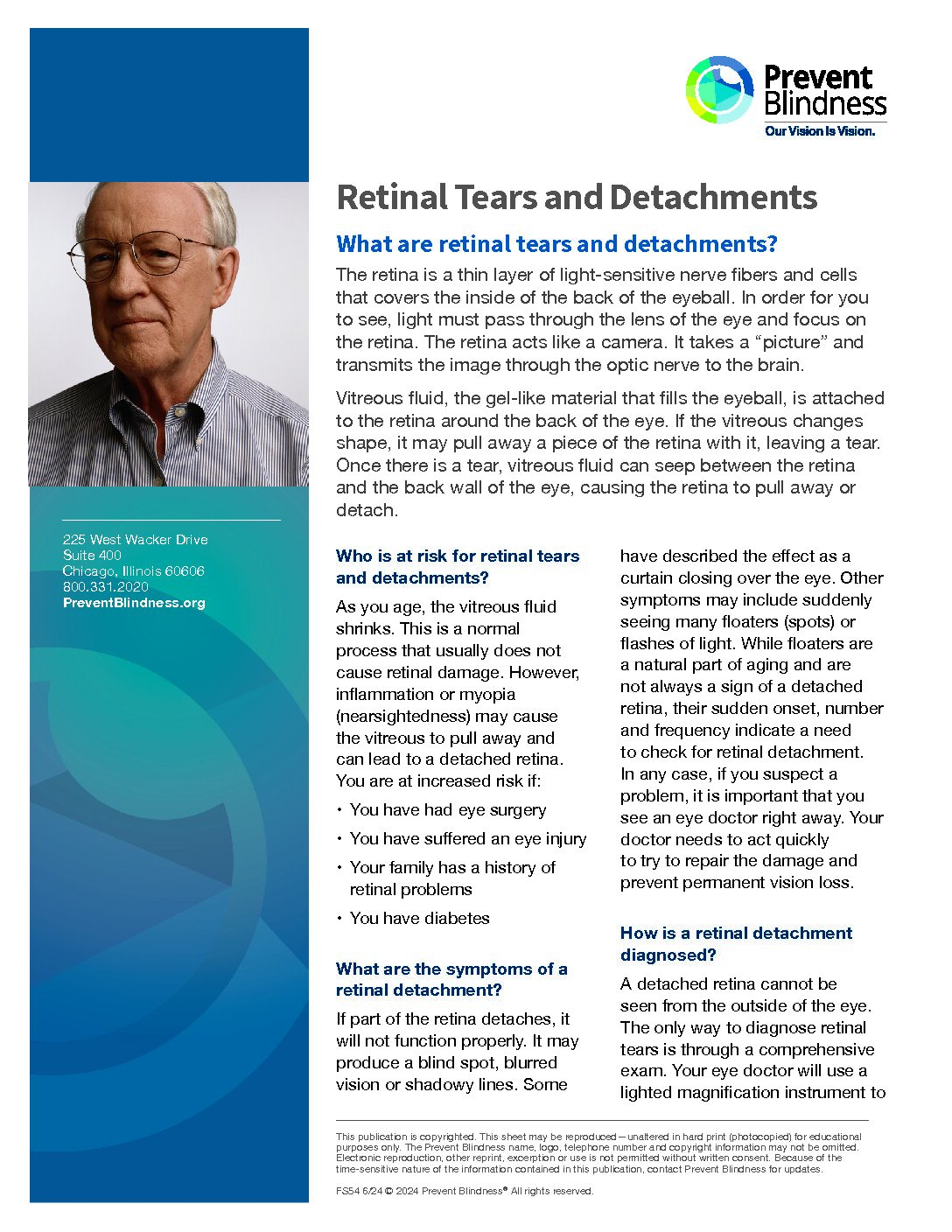The retina is a thin layer of light-sensitive nerve fibers and cells that covers the inside of the back of the eyeball. In order for you to see, light must pass through the lens of the eye and focus on the retina. The retina acts like a camera. It takes a “picture” and transmits the image through the optic nerve to the brain.
Vitreous fluid, the gel-like material that fills the eyeball, is attached to the retina around the back of the eye. If the vitreous changes shape, it may pull away a piece of the retina with it, leaving a tear. Once there is a tear, vitreous fluid can seep between the retina and the back wall of the eye, causing the retina to pull away or detach.
Who is at Risk for Retinal Tears and Detachments?
As you age, the vitreous fluid shrinks. This is a normal process that usually does not cause retinal damage. However, inflammation or myopia (nearsightedness) may cause the vitreous to pull away and can lead to a detached retina.
What are the Symptoms of a Retinal Detachment?
If part of the retina detaches, it will not function properly. It may produce a blind spot, blurred vision or shadowy lines. Some have described effect as a curtain closing over the eye. Other symptoms may include suddenly seeing many floaters (spots) or flashes of light. While floaters* are a natural part of aging and are not always a sign of a detached their sudden onset, number and frequency indicate a need to check retinal detachment. In any case, if you suspect a problem, it is important that you see an eye doctor right away. Your doctor needs to act quickly to try to repair the damage and prevent permanent vision loss.
How is a Retinal Detachment Diagnosed?
A detached retina cannot be seen from the outside of the eye. The only way to diagnose retinal tears is through a comprehensive eye exam. Your eye doctor will use a lighted magnification instrument to view the inside of your eye. Other diagnostic instruments include certain types of contact lenses, a slit lamp or ultrasound.
How are Retinal Tears and Detachments Repaired?
If your retina is only torn, prompt treatment may prevent detachment. Your eye surgeon will discuss the various methods of repair and suggest the best treatment based on the severity of the tear or detachment. There are a number of options available:
- Laser photocoagulation is helpful in repairing small retinal tears. The laser creates small burns around the edges of the tear, which produces scars. These scars seal the borders of the tear and prevent fluids from leaking toward the retina, which helps to avoid detachment. Laser treatment can be performed on an outpatient basis. It requires no surgical incision and causes less damage to surrounding tissue.
- Cryopexy is the use of extreme cold to cause scar formation and seal the edges of a retinal tear. It can be performed on an outpatient basis, but it requires local anesthesia to numb the eye.
- Liquid silicone may be injected to replace the vitreous fluid to maintain the normal shape of the eye and hold the retina and eye wall in alignment.
- To repair actual retinal detachments, fluid must be drained from under the retina to minimize the space between it and the eye wall. A silicone band may be used on the outside of the eye to push the back wall against the retina.
What Can Be Expected After the Surgical Procedure?
If diagnosed early, 85% of detached retinas can be reattached. About 40% of people with successful reattachments will have excellent vision. The remainder will have varying amounts of vision.
When the retina is reattached successfully, just how much vision is restored can depend on other factors. These include the length of time the retina was detached and whether there was any scar tissue growth. Unfortunately, not all retinas can be reattached. When this is the case, you will eventually lose sight in the affected eye.


